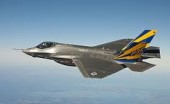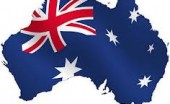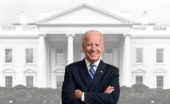Johannah Bernstein post: "eternally proud of my father’s extraordinary aeronautical engineering. legacy. here is a photo of the Canadair Water…
Wednesday Night #952
Written by Diana Thebaud Nicholson // May 31, 2000 // Herb Bercovitz, Reports, Wednesday Nights // Comments Off on Wednesday Night #952
More (photos) on Wednesday-Night.com
Susan Eyton-Jones on the eve of her departure for Charlottesville Virginia and the Ash Lawn Festival, came to say a quick goodbye and thank you to her many Wednesday Night friends who had encouraged her and written letters of recommendation on her behalf.
Misha Crnobrnja introduced his guest, Yuri Boldizeff. A graduate of McGill Engineering, Yuri has ten years of Canadian military experience and is now a senior sales executive with Accent. Yuri also runs a small computer company.
Jonathan Jonas’ guest, Chantal Beaubien, is starting Law this Fall, having completed a degree in Anthropology. Chantal spent last year at the University of New South Wales, Australia.
The economy
Chilion Heward then introduced Dr. Peter Andersen ( he has worked with the Heward family for over 30 years) whose appearance was announced in the invitation, and led the discussion by asking: What precise rate of growth does Greenspan have in mind to slow growth and maintain a sustainable economy?
After viewing a short clip featuring several analysts expressing divergent views, Peter Andersen commented that first one must always remember that institutional biases flavour what analysts say. What we hear is what the Economist’s CEO wants us to hear! One should always be highly skeptical of any 15-second sound bite. While the bank economists say that the Lion’s share of interest rate hikes are behind us, the other side counters that the first hikes don’t count. Meantime, the bond market (10-year rate) is in a state of bliss and the U.S. economy is roaring. Andersen would like Rates to stay low or lower, better for the economy, and the stocks.
The multiple parameters make forecasting difficult. Annual increase in inflation in the vicinity of three percent is considered non-inflationary. In the United States, Gross Domestic Product is up over six percent, inflation rate is one percent greater than in Canada, with fifty percent greater productivity gain than Canada. Consumption is increasing at three percent annually and continuing to rise. Employment is up and there is no current excess capacity in production. Personal income is up 24%. In fact, the only negative figure is Durable Goods Purchases – down 6.4% – but that is a very volatile figure.
The U.S. Government and Federal Reserve have a limited number of options to prevent the situation from escalating out of control. Such measures as budget control, price and wage control, are unacceptable in today’s economy, leaving interest rate control the main tool. In absolute terms the recent increases have not had a measurable impact on the economy and largely represent a return to what many have considered normal conditions. Jacques Clément saw 6% avg. real grouth in last 3 quarters & sees the Discount rate in the U.S. June +1/4% Aug. 22nd +1/4% Peter Andersen thinks the Fed has done only half the job and sees another +1 3/4%
Notes from Jacques Clément
* very strong economy: +5% avg. real growth
* most sustained expansion in 30 years [Thiessen]
* vigorous internal & external demand
* pressure on producing capacity 87.5%
* C.P.I. up from 1% to 3%
* avg. earnings +3% March (yr/yr)
* strong employment and unemployment at 24 year high
* very strong investments
* inventories up
* retail sales strong in March
* L.E.I. +2& March/April Bank rate forecast: June 29th +1/4 Aug. 22nd +1/4 GDP +4 1/2%
Although the Canadian economy has done very well, with unemployment down to only 6.8% and only two-thirds the productivity gain achieved in the United States, the need for intervention based on the economy, is less pressing here. However with anticipated multiple rate increases in the United States, probably in the vicinity of fifty basis points each, Canada will have to move in unison in order to maintain the Canadian dollar at the sixty-nine to seventy cent level.
Although forecasts of near and mid-term action by the Federal Reserve remain speculative, certainly expectation of increases totalling one hundred to one hundred and fifty basis points within the next year is not unreasonable, with corporate bond yields of eight to nine percent. The Fed will be cautious throughout the Summer and early Fall; it will avoid becoming an election issue in order to avoid any call for Congress to act to curb its power.
The unique aspect of the situation is that the current boom is neither North American, European nor Asian, but worldwide, making prognostication a risky activity. Growth in Asia is stunning and feeds on itself. (Hong Kong G.D.P.+14%, China +39% on exports) We may be underestimating the growth of the Asian economies – the commodities cycle is just beginning.
A cautionary note: an energy spike in too strong an economy could create problems, with wage settlements following. The consensus was that oil prices will continue to rise and people will adjust to new prices, rather than conserve. [We could see $35.00 OPEC prices if production is still restricted)
(Editor’s note: On this evening, there was no reflection of the prognosis advanced at the Conférence de Montréal, and passionately discussed with Pierre Bossé on Wednesday May 17th , whereby exploitation of new finds will result in a drop in price to a level below the lift price in certain countries. This combined with the lack of diversification in the oil-based economies in the Middle East, severe water shortages and droughts is a scenario for destabilization, famine and war. In fact, none of tonight’s discussion touched on the importance of the effects of environmental factors on world economies.) See OPEC story by Bruce Little.
The continuing decline of the euro elicited the comment that it is much more than a monetary proposition. It is a political (and artificial) creation. It doesn’t exist today, but when it becomes a real currency (as of January 2001), the value will start to rise and 2-4 years down the road, it will be fully established.
Air Canadian
Despite recent digestive problems, Air Canada is successfully integrating Canadian, despite glitches and a drop in service levels. With most Creditors approving the restructuring of Canadian, integration should be complete before the end of June. (Some unhappy creditors will probably sue, however.) The first weekend in June will be difficult with all traffic of both airlines moving to Toronto’s Terminals One (International) and Two (Domestic), linked by the tunnel, and the inauguration of 32 new routes. The problems of the two computer systems that cannot communicate with one another should be resolved beginning in October. Meantime all cargo is off the Sabre system. The combined airlines have achieved a traffic increase of eight percent with one percent additional capacity. The darkest cloud on the horizon is the increase in the cost of jet fuel (double where it was last year) and the difficulty of hedging for 2001 at an acceptable price.Air Canada execs hope to pacify shareholders at annual meeting
ALLAN SWIFT MONTREAL (CP) – Like the captain on a bumpy flight, Air Canada (AC) executives can be expected to use the annual shareholders meeting Tuesday in Ottawa to give a soothing report on the continuing merger with Canadian Airlines. …Schwartz, who lost his takeover fight for the airlines, was putting on a brave face at Onex’s annual meeting last week. “I think right about now Robert Milton is wishing I had (won),” he said.
Quotes of the Evening
- “Aerospace is the older economy. The cutting edge in this sector is (now) European.”
- “I’m hawkish. The Americans have a tiger by the tail.”
- “I sense we have had stunning growth. I sense we are still behind in our thinking on how strong the world economy is. – it feeds on itself. The commodity cycle is just beginning. (Fuel) is elastic in regards to supply. The supply does not keep up with consumption. It takes two to three years before consumption takes to conservation in reference to price, or production responds to demand.”
- “Rates will go up until the economy slows down. Until now, investors are giving the finger to the fed. They will regret it.”
- “We are basically writing new books on the economy.”
T H E I N V I T A T I O N
Thanks again to all who participated in last Wednesday Night with Annie Richer of Radio Canada. It was a great performance!
This Wednesday Night, Chilion Heward will introduce Peter R. Andersen PhD, of Andersen Economic Research Ltd. Some of you may remember that Peter was scheduled to be with Wednesday Night almost exactly a year ago and was, unfortunately, taken ill.
A quick résumé of his biographical notes: Peter Andersen’s career started with the Bank of Canada (1972,73) where he became Assistant Chief of the Research Department before moving to Woods Gordon (now Ernst and Young). He later spent several years as Chief Economist with Burns Fry before founding his own company which has a broad range of clients throughout North America. Dr. Andersen acts as a consulting economist for the Canadian Home Builders’ Association and writes a column for Home Builder Magazine. He is also the author of a number of publications in professional journals. The Financial Post has frequently rated Dr. Andersen as Canada’s most accurate economic forecaster. We look forward to his forecasts as those our own Wednesday Nighters prepared for the occasion when he was to have been present were not outstanding…
Do bring your pet forecasts (or casters) with you!



